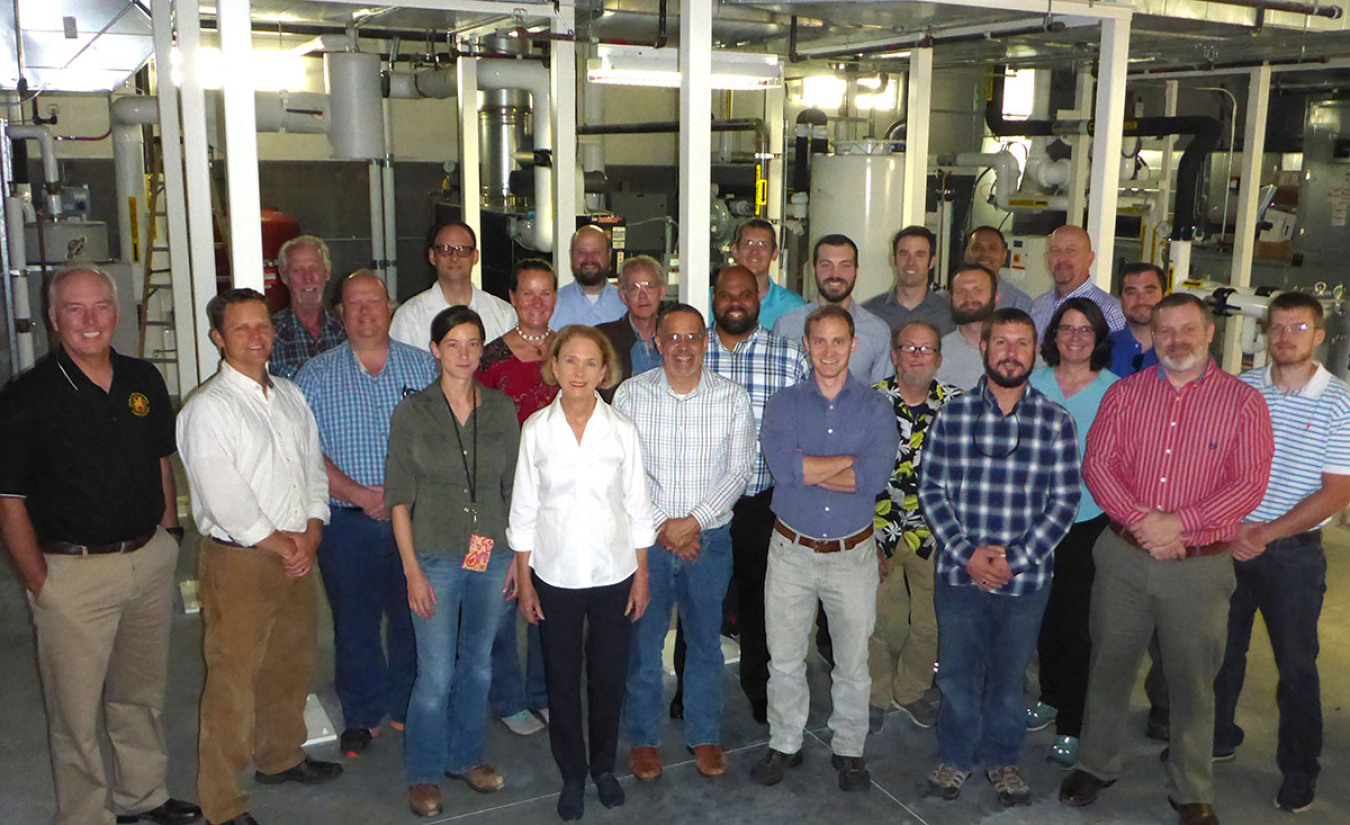
From 2014 through 2017, energy engineers from the Presidio of Monterey and CERL developed retro-commissioning (RCx) program including online and hands-on training, technical guides, contracting templates, and case study reports. What began in 2014 as an informal collaboration among Army energy managers has grown into a robust program that now has broad influence and engagement across the Army energy management community.
The Army RCx program was conceived by two engineers, Brian Clark and Jay Tulley, from U.S. Army Garrison Presidio of Monterey after taking a year-long RCx course through the local utility, PG&E where they went through an RCx process for two buildings at the Presidio. Both buildings achieved energy savings of at least 25%. This led the Presidio team to examine other opportunities for energy savings and inspired them to integrate RCx into the energy management program. Presidio began hosting practicums beginning in 2014, including online webinars, a basic curriculum, and hands-on work. The success of these practicums and the energy created amongst the participants opened the door to expand the Presidio’s practicum training into a new Army-wide approach to RCx and RCx training.
After the initial Presidio practicums in 2014 and 2015 proved successful, a more structured regimen was implemented, sponsored by OASA IE&E. This included Army policy recommendations, technical guidance for RCx tasks, and scope of work templates for RCx contracting. In 2017, additional training was launched, with online resources for HVAC and RCx fundamentals, 3D models simulating certain mechanical areas and systems, and an improved agenda. It was the most collaborative RCx practicum to date, with 22 participants from the National Guard, Reserves, Material Command, and the Installation Management Command, along with researchers, designers, project managers, construction reps, and U.S. Army Corps of Engineers and Naval Facilities Engineering Command technicians.
The RCx training program had to overcome numerous obstacles. The first challenge was the breadth of the content and the need for students of varying levels of experience to have an understanding of HVAC concepts and data management. With this foundation, the more hands-on and applied portion of the course wouldn’t be possible. To provide this foundation, a video library on YouTube was established to help bring students up to speed quickly, and various training courses were provided. A resource called “How to Guide in Retro-commissioning” was provided to participants.
A second challenge was the logistics of teaching such a hands-on course. While some material could be prepared in advance, this type of course is challenging because every building is different and has its own set of systems and issues. Each year the course was taught, the building was different, which required in-depth preparation from the Army team. Of course, this was the point of the class—to show the students the real process of RCx.
The following lessons were learned during this project.
- This type of training is needed. The response was over-whelming. There is a hunger for deep technical training. This type of training gets people excited and motivated in a way that most power-point modules don’t. Every year, we had students in the lounge of the hotel preparing for their final presentations until 9 p.m. They had laptops out doing energy calculations while eating pizza.
- The opportunity for savings is real, and the results of this type of training go way beyond just the savings produced from the RCx of the one building. Students gain new tools that lead to savings across the spectrum of their job. From design reviews on major MILCON projects to Quality Assurance on small repair projects, having a technical understanding of our buildings is crucial.
- It is understood that most energy managers have full plates and won’t have the time to do RCx full time. But the training is needed to make sure that our government staff knows how to do the process so that they can write performance work statements, understand what is needed in a contract, and hold our contractors accountable in performing RCx work.
- There is a need for better tools for contracting RCx. We need good RCx contract templates, ID/IQ contracts for executing RCx work, and good M&V plans that give the government the appropriate tools to enforce contract requirements.
The Army plans to grow the RCx program. In the summer of 2018, CERL collaborated with Fort Leavenworth on the fourth RCx Practicum. The 2018 practicum was another success resulting in more support from the Army’s Installation Management Command. In 2019, an “RCx Advanced Course” was completed for the first time. This course took previous graduates of the practicums and had them focus on buildings at their own sites with support from CERL and contractors.
Finally, the RCx training model is being revamped. The plan is to continue RCx training across three platforms:
- HVAC and RCx fundamentals online course
- Hands-on practicums at CERL
- RCx advanced course.

